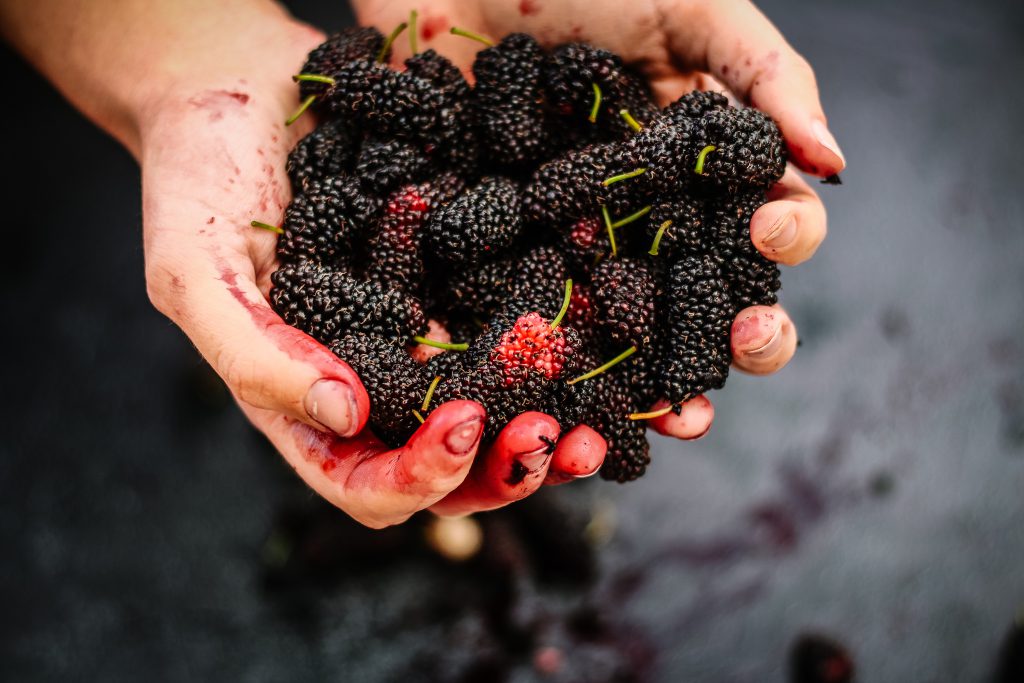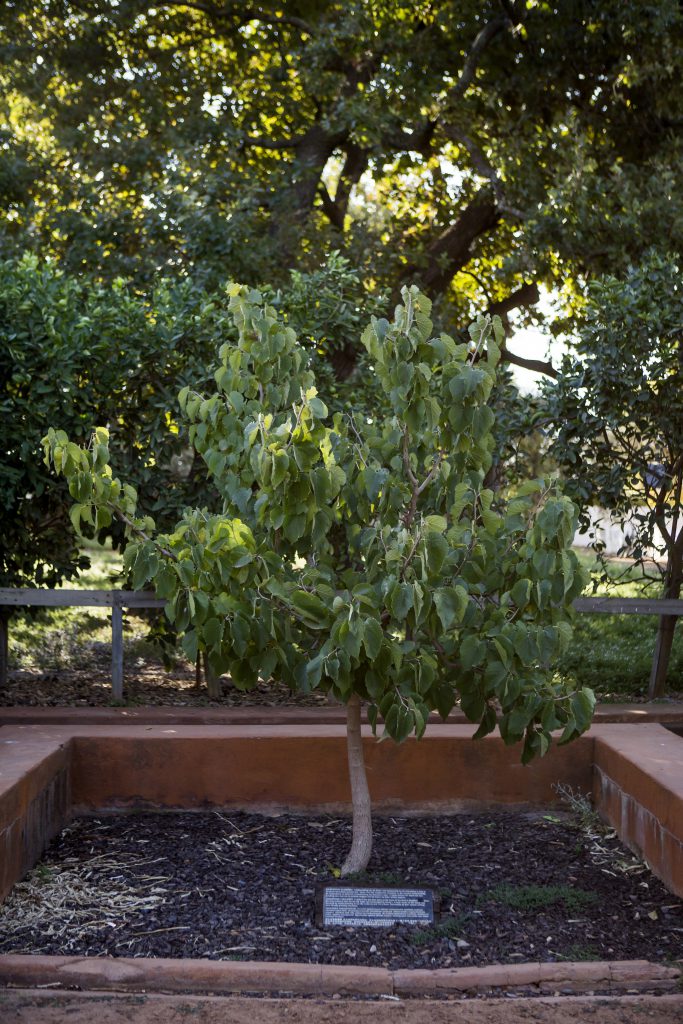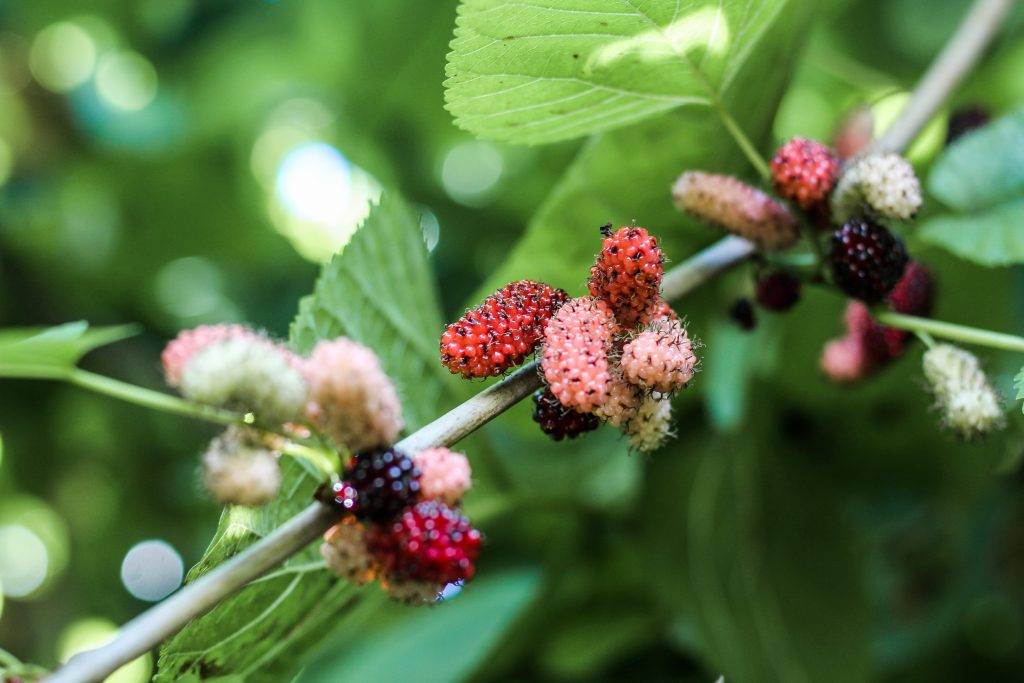
Restaurants
Spa
Day Visits
Shop
Functions
16°C
October 23rd, 2019
The sun has started rising a little earlier, and the bees and birds are buzzing and twittering their spring songs. This awakening period between winter and summer is when mulberry trees display their deep-purple glory of berries between the dense canopy of lush, new leaves.
Our mulberry block boasts a row of trees with black and a row with white fruits, both known as the white mulberry Morus alba. The white mulberry – with large, soft, glossy, hairless, heart-shaped leaves – originated in China and is best known as the sole diet of the industrious silkworm. The juicy fruits are best picked and eaten immediately, a sweet childhood memory for many, in spite of the deep purple stains that mark feet, hands and clothes. The trees with the smaller white fruits ripen a few weeks later than the trees with black fruits.

White and black mulberries are easily confused; the white mulberry also comes in black-fruited form. There’s one easy way to distinguish the two: the leaves. The leaves of the white mulberry Morus alba are glossy and hairless, whereas those of the black mulberry Morus nigra are conspicuously hairy.
At Babylonstoren, we grow a black mulberry known as the Shakespeare mulberry, the offspring of a tree planted by the playwright at his home, “New Place”, in Stratford-upon-Avon. The planting of mulberry trees to start the silk industry in England was encouraged during the reign of James I, although at the time they were unaware that only the white mulberry is suitable.

The fruits of the black mulberry are juicy and plump and regarded by many as much tastier – it’s sweet-sour tang sings in jams, jellies, syrups, cakes, pies, and adds bright acidity to salads.
Nestled in the centre of the wild bird garden, a 150-year-old weeping mulberry tree stands with the sole purpose of luring birds, which cavort in its gnarled branches and feast on the fruit. This tree was inherited along with the Babylonstoren grounds and has been moved from alongside the Manor House to its current home in the bird block, next to the giant nests.
The mulberry season is short and abundant. In our garden, they ripen perfectly in the fruit gap after the kumquats in the citrus block and before the stone fruit and other berries come into their own. The black, red and white berries are all juicy nutrient powerhouses – they have a fine balance of fibres, sugars, carbohydrates, proteins, lipids, minerals and vitamins. They’re best known for being high in vitamins C and K, and a source of iron and calcium. Much like other snackable berries, they’re also rich in antioxidants. And like raspberry leaf tea, a tea made from the leaves of the mulberry tree is believed to offer an array of health benefits.

When the mulberry isn’t in full fruit, it serves another noble purpose: that of shading garden amblers with a thick canopy of leaves during the hot and dry summer months.
The ripe fruits do not last long after picking. Freeze the ones you cannot finish to make this refreshing sorbet and enjoy the taste of mulberries throughout the year.
This sorbet is vegan and also free from refined sugar
500 g ripe mulberries, frozen + 200 ml ice-cold coconut cream
Place berries and cream in a food processor and blend until smooth. Strain through a fine sieve. Discard top pulp and pour the liquid into a suitable container to freeze. Once almost frozen but still icy, remove and blend again in the processor. Freeze, and repeat a third time. Freeze again and serve scoops with fresh mulberries.
*Variation: If the berries are a bit tart for your taste, add some pure honey to sweeten.